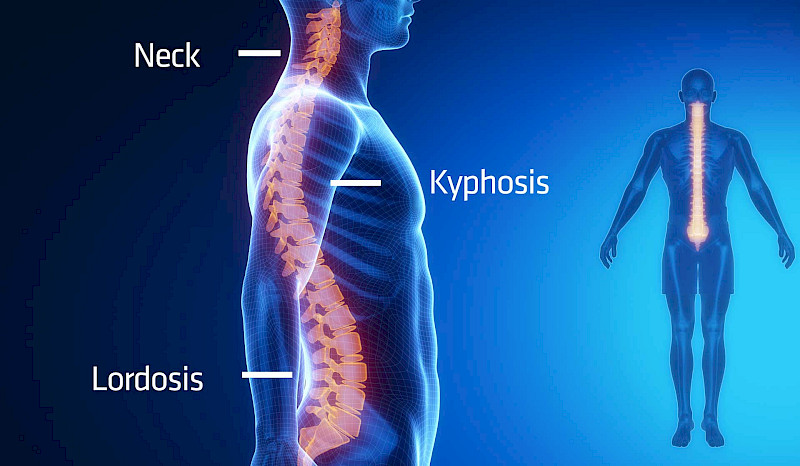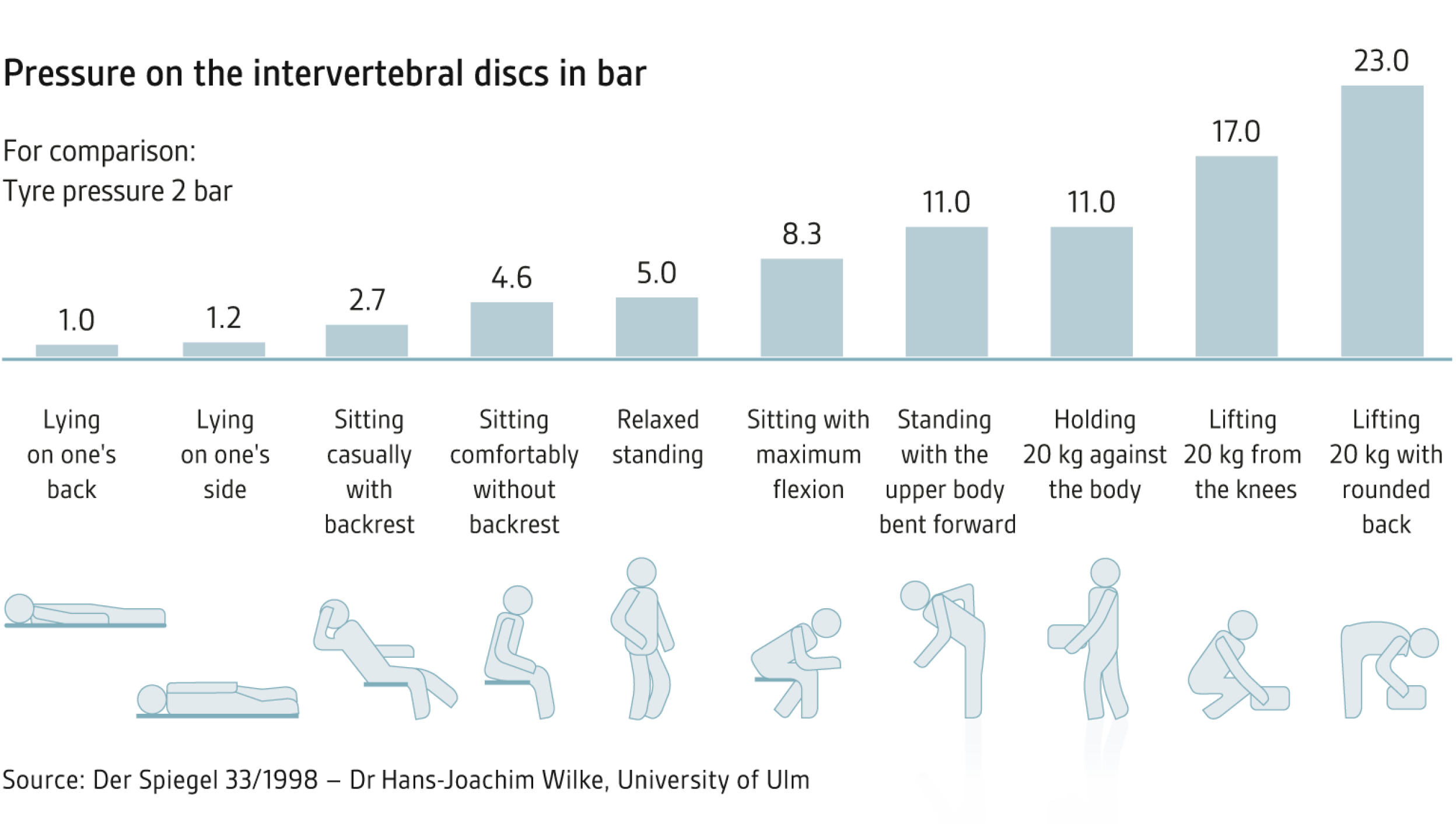19.2% of all sick notes are due to musculoskeletal complaints. At least in the office, these are avoidable. Good office furnishings address this issue in several ways at once.
The Passive Musculoskeletal System
THE SPINE
When standing upright, the spine resembles a double S shape. It curves inwards in the lumbar region (lordosis), outwards in the thoracic region (kyphosis), and inwards again in the neck area. In this posture, the intervertebral discs between the vertebrae are loaded relatively evenly.

THE INTERVERTEBRAL DISCS
With every movement of the spine, the pressure increases on certain discs while others are relieved. The pressure exerted can be considerable. In the lower back, intervertebral discs may be exposed to pressures of up to 8.3 bar. By comparison, the pressure in a car tyre is around 2.0–2.4 bar.

Nutrient supply to the discs is ensured by alternating compression and decompression. Therefore, the key to human well-being lies not only in the absolute load on the discs but also in regular movement and frequent changes of posture.
Office chairs should always have an ergonomically shaped seat and a sufficiently high backrest with lumbar support. A good swivel chair should also feature synchronous mechanics that enable dynamic sitting and relaxed reclining.
You can find more criteria for choosing office chairs under Office Chairs.
The Active Musculoskeletal System
Like intervertebral discs, muscles also need movement. Maintaining a static posture for long periods leads to muscular tension. It’s therefore essential to incorporate variety and physical activity into the working day. Useful strategies include taking adequate breaks, practising dynamic sitting, alternating between sitting and standing, and switching between differently equipped workspaces.
THE BACK AND ABDOMINAL MUSCLES
Many office workers suffer from weak abdominal muscles and overstretched, tense back muscles. Regular exercise and physical activity are the only effective remedies. It’s worth the effort for another reason, too – the digestive tract also relies on a strong abdominal wall.
THE SHOULDER GIRDLE
Nearly one in two employees experiences neck and shoulder pain. The main cause is muscular tension, which can have many triggers: poor posture due to non-ergonomic furniture, glare or insufficient lighting, noise, constant distractions, or simply lack of movement.
The Circulatory System
Prolonged sitting increases the risk of blood pooling in the legs. The so-called “calf muscle pump” plays a vital role here. It actively pumps blood upward through alternating contraction and relaxation of the calf muscles, which exert pressure on the blood vessels. Walking activates the calf pump most effectively, but even standing up or moving the legs while sitting can be beneficial.
The general rule of thumb for movement during office work is:
60% sitting, 30% standing, and 10% walking.




